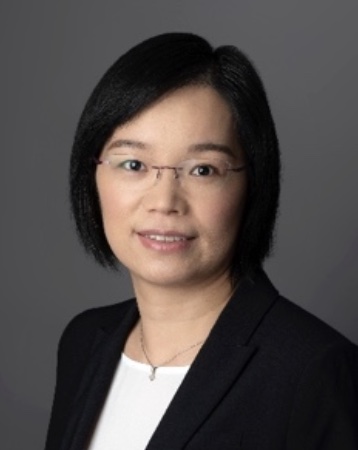
Dresden University of Technology, Germany

Prof. Ercan Altinsoy received the Graduate degree in mechanical engineering from the Technical University of Istanbul, Turkey, and the Ph.D. degree in electrical engineering from Ruhr-University Bochum, Germany. After receiving his Ph.D. degree, he worked with HEAD acoustics, Germany. Since 2006, he has been with TU Dresden, Dresden, Germany, where he is currently a Professor in acoustic and haptic engineering. His research interests include perception-based engineering, haptic interfaces, haptic perception, vibroacoustics, vehicle acoustics, electroacoustics, whole-body vibrations, product sound, and vibration design.
Dr. Altinsoy was a member of the International Graduate School for Neuroscience with Ruhr-University Bochum. In 2018, he was awarded a Visiting Professorship from Tohoku University, Japan. He is a Lothar-Cremer Medalist of the Acoustical Society of Germany, DEGA. He is the Chairman of the Vehicle NVH Expert Committee of DEGA and core team member in the several excellence clusters, such ?Centre for Tactile Internet with Human-in-the-Loopg, "EKFZ for Digital Health" and ?6G Lifeg. He has several patents and he is advisor of several car and household/multimedia appliance manufacturers.
Recent Advances and Next Generation Sensor and Actuator Materials and Solutions for Haptic Interfaces - Perception based Engineering
Material science plays a significant role on the development of sensor and actuator technologies. Passive and active materials are used for different purposes, such as the development of the mechanical structure and the realisation of the sensing process. Authores research team developed several wearable haptic interfaces using various material technologies in recent years. Haptic interfaces bring the sense of ?touchg to human-machine and human-computer applications. In the talk, the developed interfaces and the material technologies behind of them will be introduced. The material and construction properties will be discussed with regard to the function, the quality, the power consumption, the amplitude, the size and the weight. One example, which will be presented, is the recently developed electronic skin, which consist of the printed capacitive force sensor arrays and is fabricated using Kapton as substrates. Other examples are the graphene based, dielectric elastomer based, piezoelectric, hybrid, metamaterial based technologies. The biocompability and implementability are important criteria. During the development of the sensor and actuator solutions, the perceptual aspects of the human should be taken into account to augment the human mind and body. The better understanding of the multimodal integration and interaction is necessary to develop novel and useful haptic interfaces. The display properties, such as frequency response, spatial characteristics, latency, usability, weight, noise, energy consumption, etc., which play an important role on the display quality, will be discussed using the perceptual and cognitive data.

Ya-Jun Pan is a Professor in the Department of Mechanical Engineering at Dalhousie University, Canada. She received the Ph.D. degree in Electrical and Computer Engineering from the National University of Singapore, in 2003. From 2003 to 2004, she was a post-doctoral fellow of CNRS in the Laboratoire d'Automatique de Grenoble (GIPSA Lab), France. In 2004, she held post-doctoral position in the department of Electrical and Computer Engineering at the University of Alberta, Canada. Her main research interests are robust nonlinear control, cyber physical systems, intelligent mechatronics, and robotics. She has been recognized as a Fellow of Canadian Academy of Engineering (FCAE2023), Engineering Institute of Canada (FEIC2021), American Society of Mechanical Engineers (FASME2017), Canadian Society of Mechanical Engineering (FCSME2023) and received the research excellence award (2008) at Dalhousie University and Alexander von Humboldt Research Fellowship (2016) from Germany. She is a Senior Editor for IEEE/ASME Transactions on Mechatronics, an Associate Editor for IEEE Transactions on Industrial Informatics and Industrial Electronics Magazine, and a member of IEEE Control Systems Society Conference Editorial Board from 2023. She has served as Associate Editors for IEEE Transactions on Industrial Electronics (2019-2021), IEEE Transactions on Cybernetics (2016-2023), and IEEE/ASME Transactions on Mechatronics (2015-2020), Vice President-Atlantic Region of CSME (2018-2020), Canada, and Program Co-Chairs for several international conferences. Currently she serves as the IEEE IES AdCom Member-at-Large, Chairs of IEEE IES Women in Engineering and IEEE IES Distinguished Lecturer Program. Dr. Pan is a Senior Member of IEEE, and a registered Professional Engineer in Nova Scotia, Canada.
Effective Cooperation with Intelligent Adaptive Robots
In many applications such as inspection, search and rescue, co-manipulations in Industrial 4.0, healthcare services, and logistics etc., multi-robot systems are more efficient and with more operational capability in achieving the tasks. In recent years, the cooperative planning and control of multi-robot teams has been an active area of research with many formulations such as collaborative robots (COBOTs), swarming, flocking, foraging, consensus, and rendezvous, etc. This type of system is composed of several intelligent agents which interact with each other through communication channels, which imposes challenges in control to deal with the constraints such as time delays, data losses, and bandwidth limitations, and the adaptive cooperation becomes more challenging when the robots vary in terms of hardware, size, and functionalities within dynamic environments.
In this presentation, research on cooperative robotic systems including the robot-robot and human-robot interaction in the Advanced Control and Mechatronics Lab (ACM Lab) at Dalhousie University will be introduced. Specifically, the presentation will focus on recent innovative approaches on the vision-based motion planning, role-based collaboration, distributed formation control and adaptive robust control for multiple aerial and ground vehicles, adaptive cooperative manipulation systems, and adaptive tele-rehabilitation. The robot system is to dynamically adapt to the environment through planning and control, optimize their task sequences to minimize energy consumption, avoid obstacles and prevent collisions during the mission. While interacting with human, learn-from-demonstration and adaptive admittance control grant the system a level of compliance for safe human-robot physical interaction. Extensive simulation and experimental results of the proposed approaches will be demonstrated.

Tetsuya Ogata is a Professor with the Faculty of Science and Engineering, at Waseda University since 2012. Since 2017, he has been a Joint-appointed Fellow with the Artificial Intelligence Research Center, National Institute of Advanced Industrial Science and Technology, His current research interests include deep learning for mobile robots, manipulation, and human robot interaction.
Dynamic adaptability in AI with active Inference for real-world robots
Generative AI has evolved rapidly, expanding from text to audio and video applications. Yet, these applications mainly focus on input-to-output mapping. For AI to effectively interact with physical entities like robots, dynamic adaptability is crucial. Drawing inspiration from neuroscience's "active inference," we've applied "deep predictive learning" to real robots using deep learning techniques. Our work has enabled diverse robot object manipulation and industry collaborations. Our moonshot project, "AIREC," aims to merge AI and robotics for versatile smart robots. We'll discuss our progress in revolutionizing task generalization using deep predictive learning.